

Behind the scenes in the piano business it’s a very small world. You won’t last but 10 minutes before you hear something about Abel hammers. Hammer heads – the felt that strikes the strings on a piano are in my mind the most critical foundation of tone. Abel is world reknown specializing in hammer manufacturing. It was my pleasure to meet Norbert Abel last month and have him shed some light on the piano hammer making proccess. Every time I interview someone I learn something new about the piano trade. Although I’ve been in the business for just over 20 years, I only now have heard 2 words which were unknown to me before this interview: Lanolin and Biofelt. Read on to hear the words of Norbert Abel. And by the way… Abel makes about 50,000 sets of hammers per year… multiply by 88 keys on a piano that equals 4.4 MILLION hammers annually. They are arguably one of the greatest authorities on hammer making in the world.
Glen Barkman: The History of Abel – How did you come into this business?
Norbert Abel: My father, Helmut Abel started his own hammer production business in the year 1982 after he had worked for another German manufacturer making piano hammers and action parts for 23 years. His goal was to produce hammers in the ‘old style’ which meant custom making hammers for each manufacturer using high quality materials and advanced techniques.
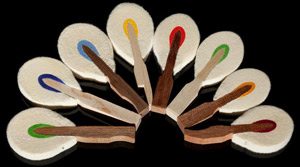 All pianos are different and have individual requirements and so with this custom approach, he convinced many of the piano makers and technicians with the Abel quality and philosophy; making hammers for many brands to individual specifications.
All pianos are different and have individual requirements and so with this custom approach, he convinced many of the piano makers and technicians with the Abel quality and philosophy; making hammers for many brands to individual specifications.
From the beginning I have been involved in the business side and have seen the continuous growth and development of production. In 1988, my brother Frank started into the business and has taken over production. The third generation, my son Alexander is now learning step by step the difficult procedure of hammer making. Since 1993 the Abel Hammer Company has a factory in Frankenhardt, Germany. In our history, our facilities have increased two times now to 24,000 square feet of manufacturing space with an annual production of over 50,000 sets of piano hammers per year.
What are the steps in making hammers?
Hammer making looks to be very easy: Take some wood, some felt and put both into a hammer press and the hammers are finished. But it is not that easy. The whole procedure is much more complicated.
Everything starts with the felt. Felt is a natural product and based on Merino wool (Merino is a type of sheep with incredibly fine and high curled fibers) from South Africa, New Zealand or Australia. In these countries the Merino wool will be selected into different grades. For making hammer felt only a high grade wool fiber can be used. Then the raw wool comes into a cleaning process to Europe where all dirt, sand, dust, mud, vegetarian parts are washed out. This process is called carbonizing under the use of sulphuric acid. However, this acid is counter productive to hammer making as it has the undesired effect that a lot of natural lanolin will be also washed out (and the acid also is not good for the environment).
Natural lanolin (also called wool wax ) is very important to keep the natural resilience in the hammer felt which greatly affects piano tone. To retain this lanolin, Abel started the BIOFELT PROJECT 2003-2006 (sponsored by the European Union) with the result of a felt called NATURAL FELT which did away with harsh chemicals in the washing stage of felt making. This is a more natural product – not as white in color but incredibly versatile in sound. The use of this new Abel Natural Felt is responsible for great success in the piano business in our company.
Felt sheets will be then cut into strips after the sheets have been carefully controlled. The single wool fiber is still in a curled position. In the hammer press the felt will be pressed around the hammer moulding to stretch the wool fibers and to build up the resilience in the hammer felt. This procedure is the main secret of the hammer production. All hammer makers have a slightly different philosophy with this. Here is where Abel’s 55 years of experience in hammer making from Helmut and Frank come into play. Understanding the whole process from “Sheep to Hammer” is the basis of the high quality Abel hammer production.
Although we have our own brand of felt, we also incorporate other felts from other makers to give a wide range of choice so that each maker can select hammers suited to their needs and guarantee the Abel high quality standard of manufacturing.

What’s the difference between cold and hot pressed hammers? How does that affect the hammer head?
Cold pressed means that the felt in the hammer press form will be pressed with no heat or almost no heat. This guarantees that the natural resilience of the wool fiber will be kept alive. Hot pressed hammers in a heated press stabilize the wool fibers however it means that the natural resilience is gone and the hammer felt has lost its elasticity and the ability to create a maximum range of sound colours. The Abel hammer production is a cold pressed process for this reason.

Why are hammers measured by weight? (for example 16lb hammers)
Hammers need a different weight because the pianos are different in size. The bigger the piano, the more weight is required to bring the long strings into vibration and to create maximum sound. For this reason especially the weight and size of the felt are important. A big hammer has a lot of concentrated resilience in the felt to stimulate the string to maximumize sound producing energy.
How does the wooden moulding material affect the hammer?
Different hammer wood is important for different weight. Especially big pianos need larger felt with light hammer mouldings. The large felt is important to maximumize sound vibration and the light woods like walnut and mahogany keep the total weight on a level which makes piano playing possible. So if you combine large felt hammers with light wooden mouldings, the overall weight is manageable at the keyboard.
What is the purpose of underfelt? Do colours designate manufacturer or something of function to identify a design or a time period?
When the first hammers were built the hammer makers did not have the same size felts available that we have today. It was necessary to make a hammer with different layers of underfelt and a thin top felt outside. Nowadays, we can make the same size of hammers with one layer of underfelt and a midsize topfelt or with no underfelt and a big size topfelt. The quality of the underfelt is always the same. But the underfelt can be dyed with different colours to show different brands.
How does quality of felt affect tone? Within one sheet of felt there might even be discrepancies in tone, correct? What felt does Abel use?
We use various felts from different makers. Different felt manufacturers each have a ‘signature’ in the type of felt they make. The combination of felt and felt making procedures will result in different sounding hammers. In this way hammers can be individualized for customized requirements. Felt is a natural product. There are natural discrepancies within a sheet and from one sheet to the next sheet. It depends on the ability of the hammer maker to realize these discrepancies and to select the felt strips. Abel has skilled people who test all felt strips by hand and with their experience they select the strips in to different grades like soft, medium or hard. We call this the “outside quality”. The inside quality depends on the different raw wool and manufacturing process of felt in the felt factory. That means the inside quality describes different characteristics of felt from different felt makers. At Abel we are always in discussion with our felt suppliers to keep the inside and outside quality of the felt sheets within an acceptable quality range. Abel is in contact with all hammer felt manufacturers worldwide which allows us to always select the right felt for our customers and retain diversity.
Density of felt also produces really different results. Is there a way of determining sound from a certain hammer from density and/or elasticity?
The density can vary from one sheet to the next sheet and also within a sheet. As long as the density is within the tolerance of the Abel specification the felt can be used in the Abel hammer production. Density of felt sheets can be determined with the felting process, the milling process and a pressing process. Most important is the felting and milling which enables the wool fiber to interlock and to build up a system of fibers with a maximum elasticity when the felt becomes pressed around the hammer moulding. This complicated procedure has a big influence on the sound of a piano. A hammer with a lot of resilience and a lot of natural life in the felt can create a wider tonal range. The best felt to reach this goal for our production is the ABEL NATURAL FELT. Hammers with less resilience and stabilized wool fiber do not have the ability to create such a wide variation of tonal colour at the piano.

I just want to say thanks to Norbert for allowing us a small glimpse into the art of hammer making. In addition to manufacturing of hammers, Abel also performs operations related to hammer customization called shaping, coving and tapering. Of interest to some wanting to preserve a vintage instrument, Abel also has the capacity to re-felt hammers on existing mouldings. This keeps the wooden shanks and flanges intact and keeps the authenticity of the instrument. Amazing! Hope you enjoyed this interview as much as I did.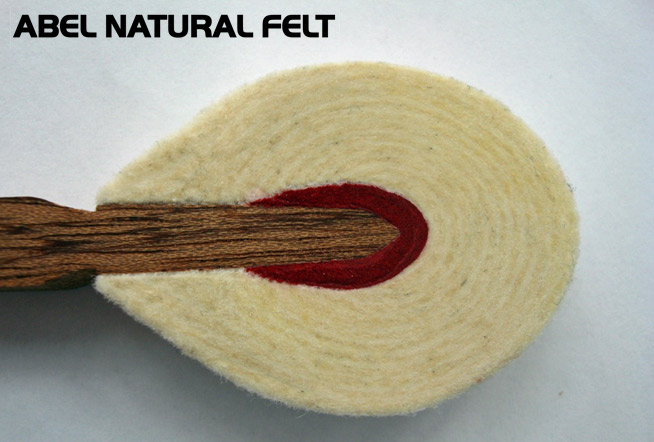
More Piano Articles

During the performance of Jacob Collier at the most recent NAMM show I was reminded that music makes us human, that beauty binds us together as a collective, and that the reason the music industry exists is to aid in the creation of art. I needed that reminder without which, the annual trade show featuring many of the great piano makers is just the sale of wares. I believe that people are feeling the uncertainty ...
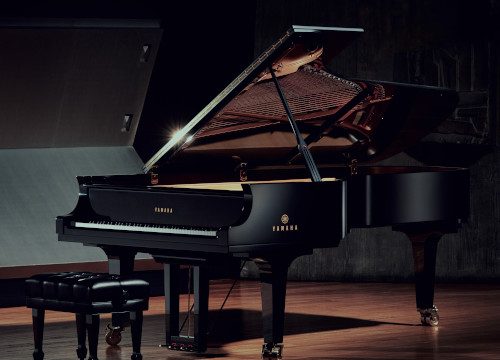
I used to have a teacher who would frequently say, “For every single grade point PAST 80%, it takes as much effort as the FIRST 80.” I believe this statement to be true from experience. The first 80 is the easiest. Chipping away at every point past that is the challenge. The bulk of the work can bring a project into shape but it’s the pursuit of excellence, that’s where the challenge lies. Yamaha is ...

The value of a piano is obvious ~ it’s the music that you make with it. But often, families are going through life changes which involve a house move and unfortunately, the piano needs to be sold. They invariably ask the question, “What are we going to do about the piano?” This question comes up because, as you can imagine, they’re not easy to move. We don’t simply pack them away in a cardboard box ...

You’ve been playing your piano for years now and the time has come to seriously consider downsizing the house and move into a condo. But what do you do with the piano? You love your piano and can’t imagine life without it and besides, you absolutely hate the idea of playing a digital keyboard. Many people don’t know that you can add digital functionality without compromising your existing piano. Yes, it is completely possible to ...
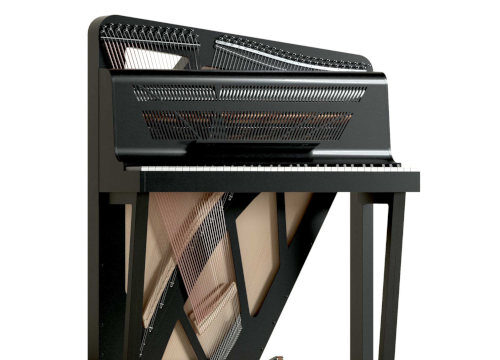
Many years ago, I remember seeing a piano in a museum similar to the one shown above (built in 1787 by Christian Gottlob Hubert. On display at Germanisches Nationalmuseum - Nuremberg, Germany). I have often wondered why acoustic portable pianos never really took off. Although we've seen more portable keyboard instruments like harpsichords, accordions or electronic keyboards, they operate completely different from a traditional piano in that they either pluck the strings, use air with ...
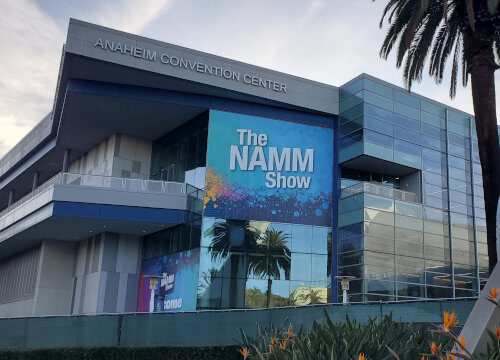
This was the first year since covid that the National Association of Music Merchants (NAMM) trade show was back to its regular January date and, in fact the first show where it felt back to normal. How was it? To answer that, I'm going quickly review the piano market over the last few years. Piano sales boomed during covid. Think about it - everyone was at home and with time on their hands, many turned ...